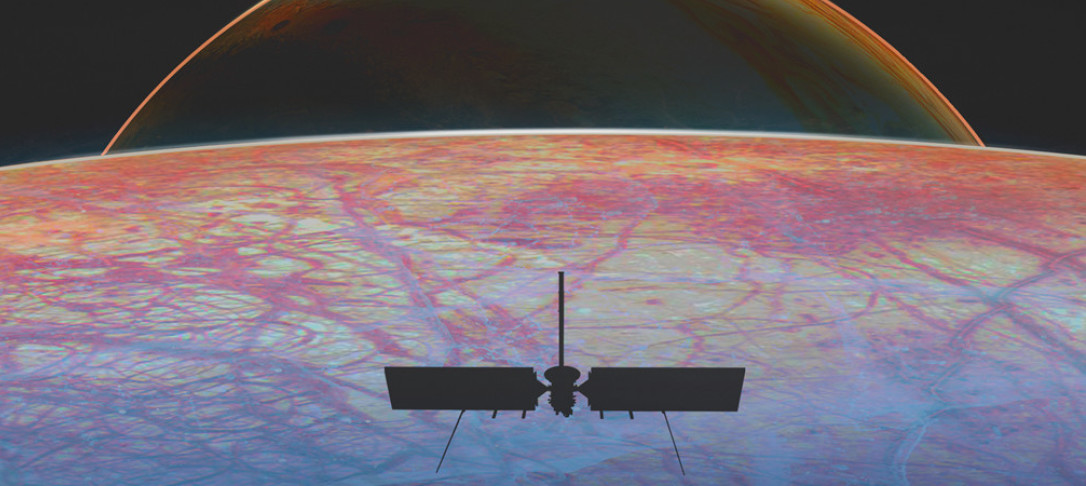
Dr Bob Pappalardo will give the ESE Departmental Seminar on 26 November, “NASA’s Europa Clipper Mission: Exploring a Potentially Habitable World”
Join us online at 12pm on Thursday 26 November, by clicking Livestream on the seminar page
Jupiter’s moon Europa may be a habitable world. Data from the Galileo spacecraft suggest that a global-girdling liquid water ocean exists beneath its frozen ice surface. A scarcity of large craters tells of a young surface and recent geological activity, while magnetic field data implies that a salty ocean persists today. Europa’s ocean and surface are inherently linked: tidal flexing of the floating ice shell breaks and deform the surface to create ridges and bands, while dark spots, domes, and chaotic regions are probably related to flow of warm ice, along with local melting. Europa is tremendously intriguing because the “ingredients” necessary for life—water, chemistry, and energy—might be present within the satellite’s ocean. NASA is planning a flagship robotic mission to explore Europa and investigate its habitability, employing a highly capable suite of instruments on a spacecraft that will make dozens of close flybys of Europa from orbit about Jupiter, swooping as close as 25 km from Europa’s surface. The Europa Clipper mission will interrogate the moon’s ice shell, ocean, composition, geology, and it will seek current activity including putative plumes. This talk will summarize our state of knowledge about Europa and the science potential of the Europa Clipper mission, which will explore Europa to investigate its habitability.
 Dr Robert Pappalardo is the Project Scientist for NASA’s Europa Clipper Mission at the Jet Propulsion Laboratory, California Institute of Technology, USA. He has also served as the Project Scientist for the Cassini Equinox (first extended) Mission at Saturn, for which he received NASA’s Exceptional Service Medal. He has served as a member of the National Research Council’s Space Studies Board and as Co-Chair of its Committee on the Origins and Evolution of Life. He received his B.A. in Geological Sciences from Cornell University in 1986, and he obtained his Ph.D. in Geology from Arizona State University in 1994. His research focuses on processes that have shaped the icy satellites of the outer solar system, especially Europa and the role of its probable subsurface ocean.
Dr Robert Pappalardo is the Project Scientist for NASA’s Europa Clipper Mission at the Jet Propulsion Laboratory, California Institute of Technology, USA. He has also served as the Project Scientist for the Cassini Equinox (first extended) Mission at Saturn, for which he received NASA’s Exceptional Service Medal. He has served as a member of the National Research Council’s Space Studies Board and as Co-Chair of its Committee on the Origins and Evolution of Life. He received his B.A. in Geological Sciences from Cornell University in 1986, and he obtained his Ph.D. in Geology from Arizona State University in 1994. His research focuses on processes that have shaped the icy satellites of the outer solar system, especially Europa and the role of its probable subsurface ocean.